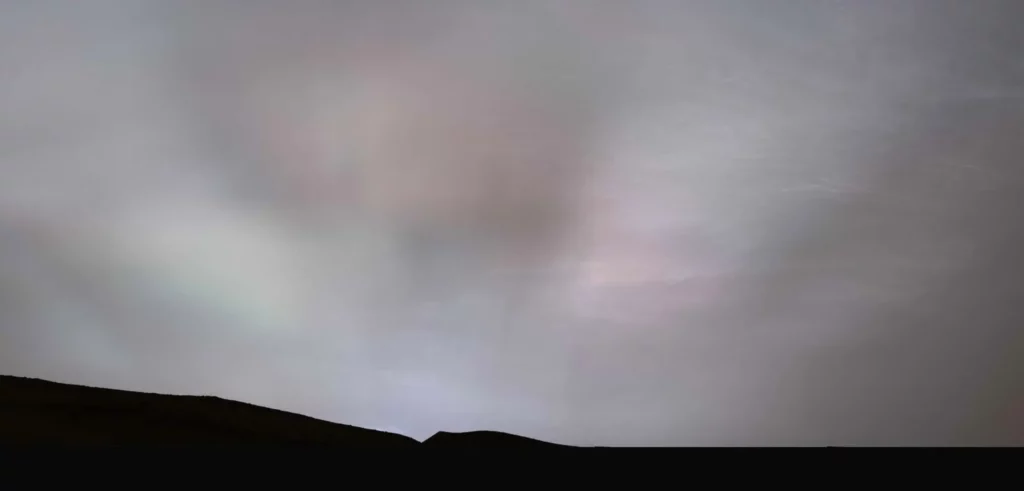The Curiosity Rover has been exploring Mars for over a decade now, trying to find out why the red planet became a frozen desert after being warm and wet. But instead of continuing to look at mountains, rocks and dirt, the rover is now on a different quest, which has allowed to capture crepuscular rays, or sun rays, from the Martian surface.

On February 2nd, as the Sun descended over the horizon on Mars, rays of light illuminated a bank of clouds. These sun rays, captured by the rover, are bright streaks that happen when objects such as mountain peaks or clouds partially obstruct the incoming light. This was the first-time sun rays have been so clearly visible on Mars in our period of exploration on the Red Planet.
Curiosity is doing a survey of clouds on Mars to follow on its previous observations of night-shining clouds. Back in 2021, the rover used its black and white navigation cameras to observe the structure of the clouds. Now, the new survey, which started in January, uses the color cameras located on its mast to watch as cloud particles grow.
The clouds seen in the photo are located at a higher altitude than most clouds on the red planet, located around 50 kilometers above the ground and made of water ice. While Mars is dry, there’s water vapor in the atmosphere that forms clouds. Observing them can help to learn more about the planet’s overall weather, NASA said.
As well as getting a clear view of Mars’s sun rays, Curiosity has also taken other interesting photos since it started its survey this year. Among them, one image from January 27th shows an “iridescent” cloud shaped like a feather. When illuminated by sunlight, some types of clouds can form a rainbow-like display that is called iridescence.
“Where we see iridescence, it means a cloud’s particle sizes are identical to their neighbors in each part of the cloud,” Mark Lemmon, an atmospheric scientist at the Space Science Institute, said in a statement. “By looking at color transitions, we’re seeing particle size changing across the cloud. That tells us about the way the cloud is evolving.”
A long-term mission
Curiosity is the largest rover ever sent to Mars. It launched in 2011 and landed on the red planet the following year, seeking to understand whether Mars ever had the right environmental conditions to support small life forms. The rover has the biggest and most advanced instruments for scientific studies ever sent to the Martian surface.
Early in its mission, Curiosity found chemical and mineral evidence of past habitable environments on Mars. Now, it continues to explore the rock record from a time when Mars could have been home to microbes. The rover has 17 cameras, a laser to vaporize and study spots on rocks at a distance and a drill to collect powdered rock samples.
Working alongside Curiosity, the Perseverance rover is also on Mars since 2021. It’s designed to find signs of past and present life on the planet by doing numerous experiments. It’s situated on the Jezero Crater, where it landed, the site of a suspected ancient lake and river, where NASA hopes it can eventually find any evidence of life.









